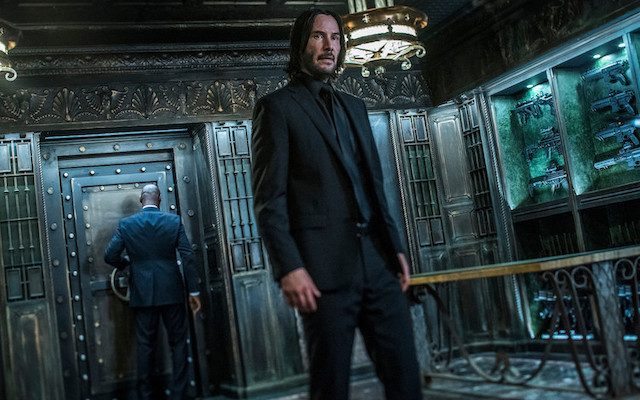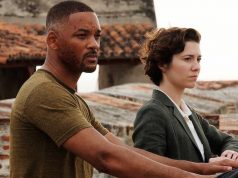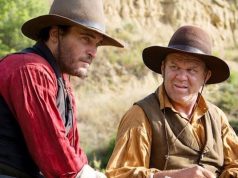
John Wick’s first line of dialogue in “John Wick: Chapter 3 — Parabellum” is an instruction to a taxi driver: “The New York Public Library.” How cool that an elite assassin is also a reader! Shortly after arriving at the library, he kills someone with a book. This is also cool. Look, we contain multitudes.
The third (but by no means does it expect to be the last) entry in this well-executed series of violent face-offs, again directed by former stuntman Chad Stahelski, picks up immediately where Chapter 2 left off. Wick (Keanu Reeves), having violated the policy against “conducting business” (killing) at the assassins-only Continental hotel, is excommunicated by the High Table that governs the global criminal underworld, a $14 million bounty placed on his head. Continental manager Winston (Ian McShane) has given him an hour’s head-start, but after that, no one loyal to the High Table is permitted to help John Wick in any way. Asked by desk clerk Charon (Lance Reddick) what he thinks Wick’s odds of success are with every professional killer in the world pursuing him, Winston estimates that they are about even.
To be restored to full fellowship, Wick calls in a favor with a Russian ballet director (Anjelica Huston) who helps him get to Casablanca, where he calls in a marker with a colleague named Sofia (Halle Berry). It seems there is someone above the High Table to whom Wick can appeal, but it requires a vision quest in the desert. We learn more and more about the hierarchy, policies, currency, and mythology of this world, all of which is dorky fun and makes absolutely no sense.
Meanwhile, back at the Continental, Winston is visited by an ice-cold Adjudicator (Asia Kate Dillon) who wants to know how a violation of the rules could have happened at his hotel and, furthermore, why Winston gave Wick that head-start instead of having him killed immediately. This Adjudicator goes around visiting everyone who’s had contact with Wick, meting out punishments and demanding they prove their fealty to the High Table. Consistently throughout the film, “fealty” is the word everyone uses for loyalty, with the connotation of a serf pledging allegiance to a lord.
The scenes in which people converse rather than kill each other are serviceable, the story filled with enough baroque details to be compelling even between fights, but like Chapter 2, Chapter 3 becomes too enamored of its own plot. For make no mistake, it is the battles for which this franchise exists, and Stahelski and his crew deliver an almost relentless series of epic ones, filmed and edited in such a way as to spotlight the skill of the performers: wide shots, long takes, often without any musical score so there’s nothing to distract you from seeing the literal things that these humans are literally doing. (And dogs! There are two very good dogs who also do incredible things.) The settings vary: a fistfight in the library, a knife fight in a room full of knives, another knife fight underwater, a squad of black-clad swordsmen on motorcycles pursuing Wick, a few good old-fashioned gunfights, etc. More than one opponent takes the opportunity mid-fight to express admiration for Wick and what an honor it is to be fighting him.
As ever, there is Keanu Reeves at the center of it: taciturn, zen-like, and almost 55 gosh dang years old. John Wick isn’t the type of action hero who delivers corny punchlines after dispatching an enemy, and Reeves wouldn’t be good at playing one. Wick is stoic and noble, like a dog-loving samurai, played by a beloved puppy dog of an actor. It’s a perfect pairing of actor and role.
Now, if we could just make these things about 30 minutes shorter…
B (2 hrs., 10 min.; )





